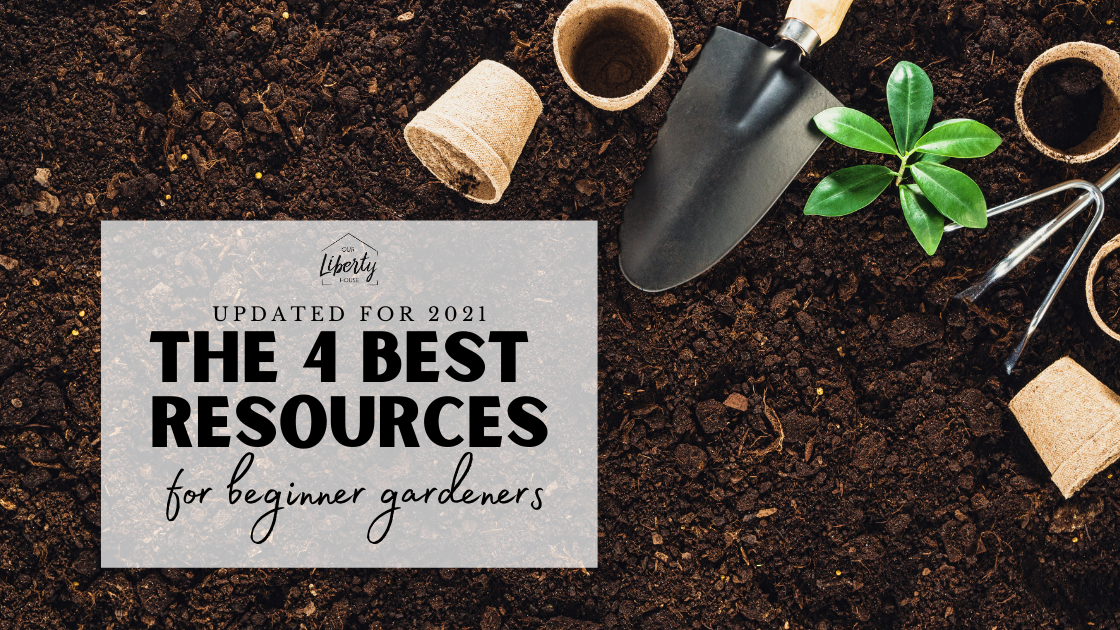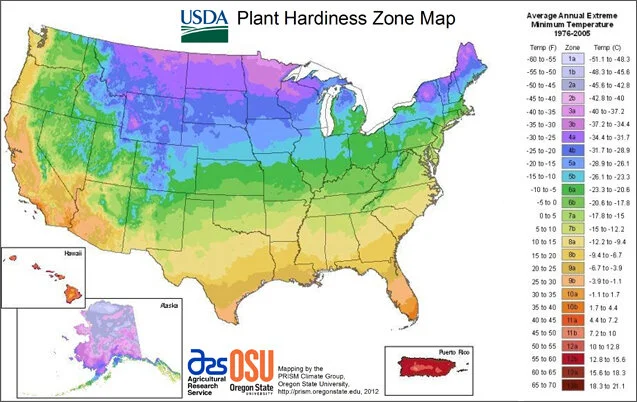The 4 Best Resources for Beginner Vegetable Gardeners in 2021
So you want to start a vegetable garden?
Or maybe you’ve been gardening for awhile and want to expand the varieties you grow?
A simple Pinterest or Google search will produce pages upon pages of results, but how do we know its reliable, pertinent, and up to date? It can be quite overwhelming to search the internet for “Zone 5 Planting Calendar” and get hundreds of inaccurate, poorly linked websites, or differing results. We understand the internet can be your oyster for knowledge, but sometimes it’s overwhelming. Which is why we broke down the top resources into just 4, yes just 4! We hope you find this information useful and to the point.
USDA Hardiness Zones
Determine your USDA Hardiness Zone
USA Hardiness Zones are helpful in determining what will grow in your area.
Maybe you already know it? Maybe not? The first step to figuring out what and when to plant is finding your Hardiness zone. This is a number from 0-13 (most of the US falls in 4-9) that is based on Average Annual Extreme Minimum Temperature. Remember this number! You can use your growing zone number when shopping online for plants, trees, and shrubs to ensure that they will grow in your Hardiness Zone. [Find Your Hardiness Zone]
Sample Planting Schedule
TIP: Be Specific when Researching
Did you know, searching for “vegetable planting schedule” in Google produces 71 million results in 0.9 seconds? MIND BLOWN. How can we sift through that much information and make sure its what we want and need. However, a search for “Sacramento planting schedule” only produced 600 thousand results with 3 of the top 10 being from the local extension office, 1 from a local nursery, 1 from the newspaper, and one from a man by the name of “Farmer Fred” (whom we believe we would trust). Just by being specific in a search, I was able to filter through 71 million results to find 10 that are going to fit my needs.
2. Follow your County Extension Office's for Credible Advice
Every county or region in the United States has an Extension Office dedicated to agriculture in the given area. These websites are run by professionals in the agricultural industry as well as certified Master Gardeners in your area/region. The Extension office is a great resource because it will have credible information for your specific area from reputable professionals. They have articles from soil amendments to growing calendars to pest issues. Depth of information is something to value and these local resources have dedicated their professional and personal lives to that. Trust It.
3. Talk to a Locally Owned Nursery
By local we mean locally owned, not necessarily the closest option. Trust me, running to the big box store right down the road is the easiest option but I have little faith that the 19 year old working a part time job in the “Garden Center” is going to provide much insight. Go to a nursery in your area that staffs professionals who care about gardening as they will often love helping you and provide needed education. When we moved to California we had 3 large palm trees in our yard and honestly had no idea how to take care of them. We ventured on down to the nursery with nothing more than some phone pictures. The first employee we asked was unable to help us, but she knew who to ask! and that’s what’s important. One of the Master Gardeners on staff was able to identify all 3 palms in a few short minutes. Knowledge is the real benefit you gain from shopping local. Someone at your locally owned nursery has a passion for vegetable gardening and is more than willing to help you get started in the process.
Backyard Garden circa 2016
TIP: Plants Were Meant to Grow
The real take away here is that plants do not need much help from the likes of us humans. Follow the directions on the seed package or the tag from the nursery and go from there. The only magic involved is the awe of your first amazing vegetable crop. Water when the soil is dry. Place a finger in the dirt about an inch deep, if its dry then provide your plant with a slow deep watering. Harvest at the allotted amount of time. You will not be perfect after your first attempt (let alone you third, fourth, or fifth try). But the process is the adventure and let me tell you the process is fun.
4. Social Media is Where it’s At
Yep, we went there. We have personally learned SO much from our neighbors (figurative neighbors) through social media. Facebook Groups are HUGE and I guarantee there is a gardening group on Facebook for you specific city or county. The Instagram gardening community is also strong - simply search with the hashtag + your zone (so for us we follow #Zone9b and are inspired by gardeners growing similar vegetables and plants as! Youtube is another great resource as there are tons of gardening content on there. Simply search what your interested in learning more about like: Compost or Raised Beds and you’ll be sure to get hundreds of hours of content for your hearts desire. Even by following those not in your zone but with similar interests helps you get started and inspired to try new things! We are on all platforms and would love to serve as your inspiration! Check us out with the links below.
Follow us
@OurLibertyHouse
To review, here are the 4 best resources for beginning gardeners for 2021:
Find Your USDA Growing Zone
Follow your county’s extension office for credible advice
Talk with a locally owned nursery
Social Media is a great tool
At the end of the day the best advice we can give is to simply get out and play with soil. It truly is a fun and rewarding endeavor.
Lucas
Are you still thirsting for more? Check out some of our other articles that are great for beginner gardeners!
4 Reason to Install Drip Irrigation
How to Build a Steel Raised Bed
Compost 101: The 5 Steps to Composting with Q&A
Gift Guide for the Gardener <—-Our Favorite gardening books are listed here!





